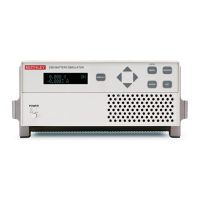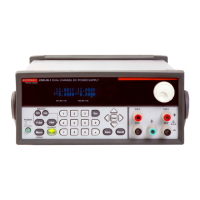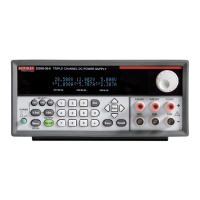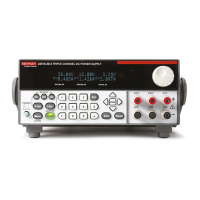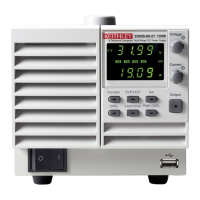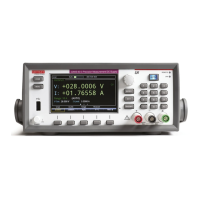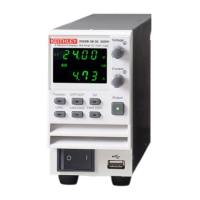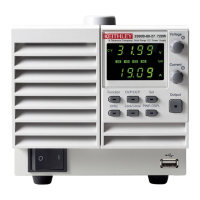3-6 Pulse Current Measurements
1. Press the DISPLAY key to access the display menu.
2. Press the
or key until “PULSE CURRENT” is displayed and press ENTER.
3. Use the
or key to display the desired pulse measurement; high, low or average.
NOTE For details on display modes, see “Display modes” in Section 1.
Pulse current measurement procedure
The following steps summarize the procedure to perform pulse measurements:
1. For Model 2303-PJ, select the desired measurement range (5A or 500mA) from the
CURRENT RANGE item of the menu. For Models 2303 and 2303B, pulse measure-
ments are automatically performed on the 5A range.
2. From the PULSE CURRENT item of the menu, set the trigger level and delay, integra-
tion times, and average readings count.
3. As explained in Section 2, set the output voltage and current limit, and press OPERATE.
4. Press the DISPLAY key and select the PULSE CURRENT display type.
5. Use the
or key to display the desired pulse measurement: PULSE HIGH, PULSE
LOW, or PULSE AVG.
NOTES If no pulses are detected, current will not be measured (i.e. -----A) and the “NO
PULSE” message will be displayed. The “NO PULSE” message is displayed with
dashes or the last valid pulse reading. Dashes are shown if the pulse-current measure-
ment settings are not appropriate for detecting pulses. The last valid pulse is shown
if the pulse disappears while taking background readings and no change in pulse
settings was made.
Pulses are not detected with the output off. With the output on, pulses will not be
detected if the trigger level is too low or too high. Perform the following procedure to
find an appropriate trigger level. Make sure the voltage and current settings are
appropriate for detecting pulses.
Determining correct trigger level (pulse current)
1. If using Model 2303-PJ, make sure it is on the same current range (5A or 500mA) that is
being used for pulse measurements (step 1 of the “Pulse current measurement procedure”).
2. Turn on the output.
3. Select the pulse current display type. If the trigger level is too low or too high, the “NO
PULSE” message will be displayed. If pulse current measurements are instead being dis-
played, the trigger level is valid. You can skip the rest of this procedure.
4. Go into the menu, select PULSE CURRENT, and then TRIGGER LEVEL.
5. Change the PULSE TRIG LEVEL and press ENTER. If the trigger level is still too low
or too high, the “A/D PULSE TRIG NOT DETECTED” message will be displayed
briefly. Note that it may take a few seconds for the message to appear.
6. If the message appeared, repeat step 5 until a valid trigger level is found.
7. Use the MENU key to back out of the menu structure and display pulse current
measurements.
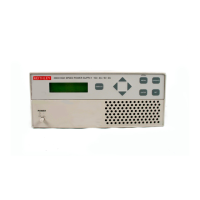
